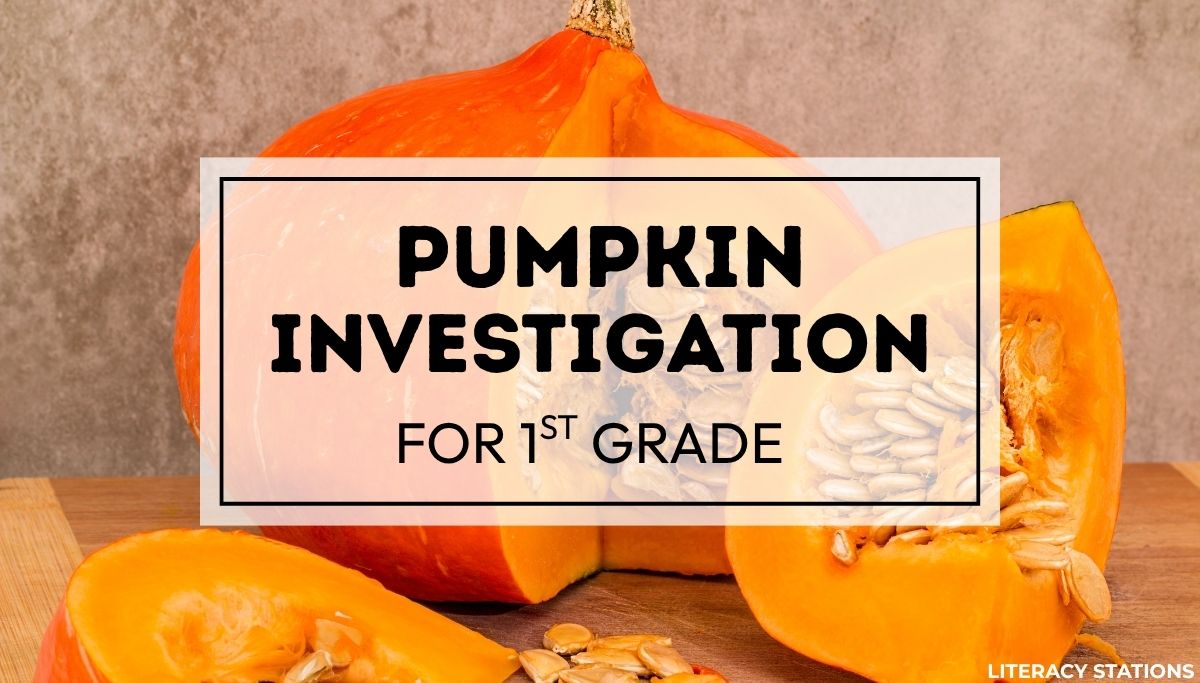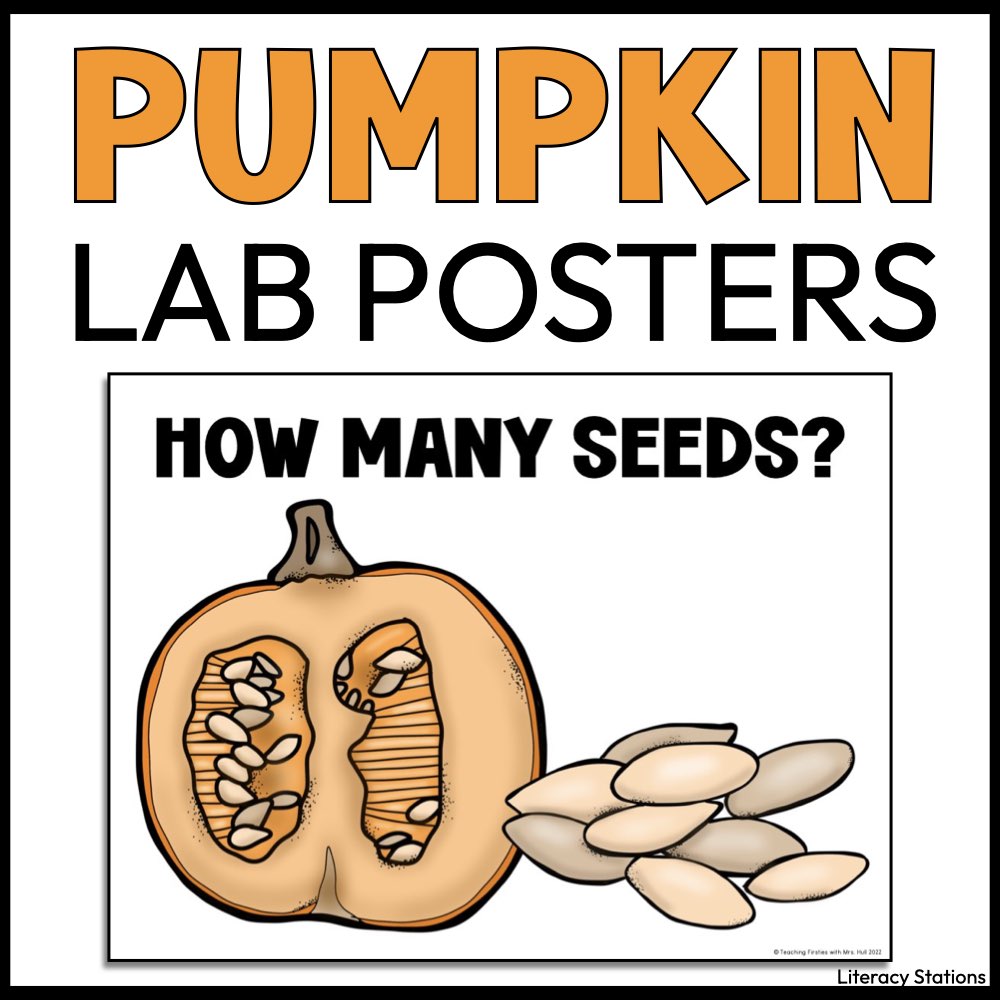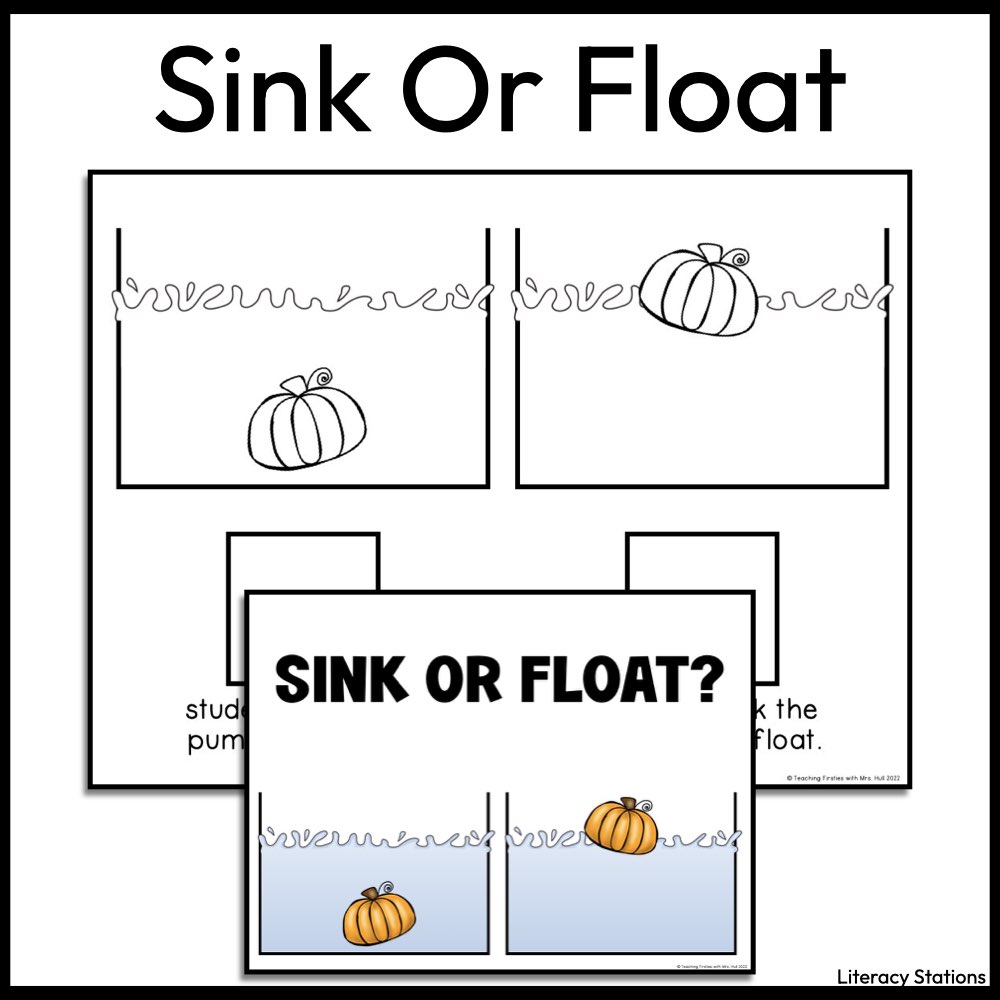Having a Pumpkin Investigation Day in First Grade is a great way to bring pumpkin science activities and hands-on learning into your October lesson plans.. This blog shows how to organize and implement a full day (or block) of pumpkin labs using standards-aligned activities. You’ll see exactly what to prep, how to run it, and how to support student learning with observation, vocabulary, and writing tasks built into each step.
Why Plan A Pumpkin Investigation Day?
Pumpkin-themed science activities and pumpkin science experiments help build key first grade science skills: observing, predicting, measuring, classifying, and recording. They also give students real-world vocabulary to support nonfiction reading and writing.
Before You Begin: Setup Tips for Pumpkin Science Activities
Prep Materials Early
Prep your pumpkins ahead of time and gather simple tools like rulers, string, balance scales, and bowls. Keep paper towels, trash bins, and zip-top bags handy for clean-up and seed sorting. With everything prepped in advance, you’ll be able to focus on the experiments, and not the mess.
Use the full-color Pumpkin Investigation Posters and Recording Sheets to set up your lab stations with clarity and consistency. Each poster introduces a hands-on activity with visuals and guiding questions, while the matching student pages help collect observations, compare data, and build vocabulary.
Structure Your Rotations
Ask For Help
Aides, parent volunteers, or buddies in a higher grade can help run stations and assist with cleanup.
Keep Materials Contained
Label bins or bags by activity to simplify transitions. Have wipes and paper towels ready for anything involving seeds or pulp.
Start With a Pumpkin Read-Aloud
Start the day with a pumpkin-themed nonfiction read-aloud like Seed, Sprout, Pumpkin, Pie by Jill Esbaum. The clear language and real-life photos introduce vocabulary and concepts your students will use during their investigations.
Looking for more pumpkin books to build background knowledge or extend your science lessons? Check out our list of 20 Pumpkin Read-Alouds for First Grade—each title includes a quick summary and ideas for how to use it during cross-curricular instruction.
Step-by-Step Pumpkin Investigation Ideas and Activities
1. How Big Is Our Pumpkin
This activity introduces basic measurement skills using real objects. Students estimate the size of a pumpkin, then measure the actual height and circumference using string, cubes, or a flexible measuring tape.
What To Prep:
One medium or large pumpkin per group
Yarn, string, linking cubes, or measuring tape
Copies of the “How Big Is Our Pumpkin?” Poster and Recording Sheet from the Pumpkin Investigation Posters
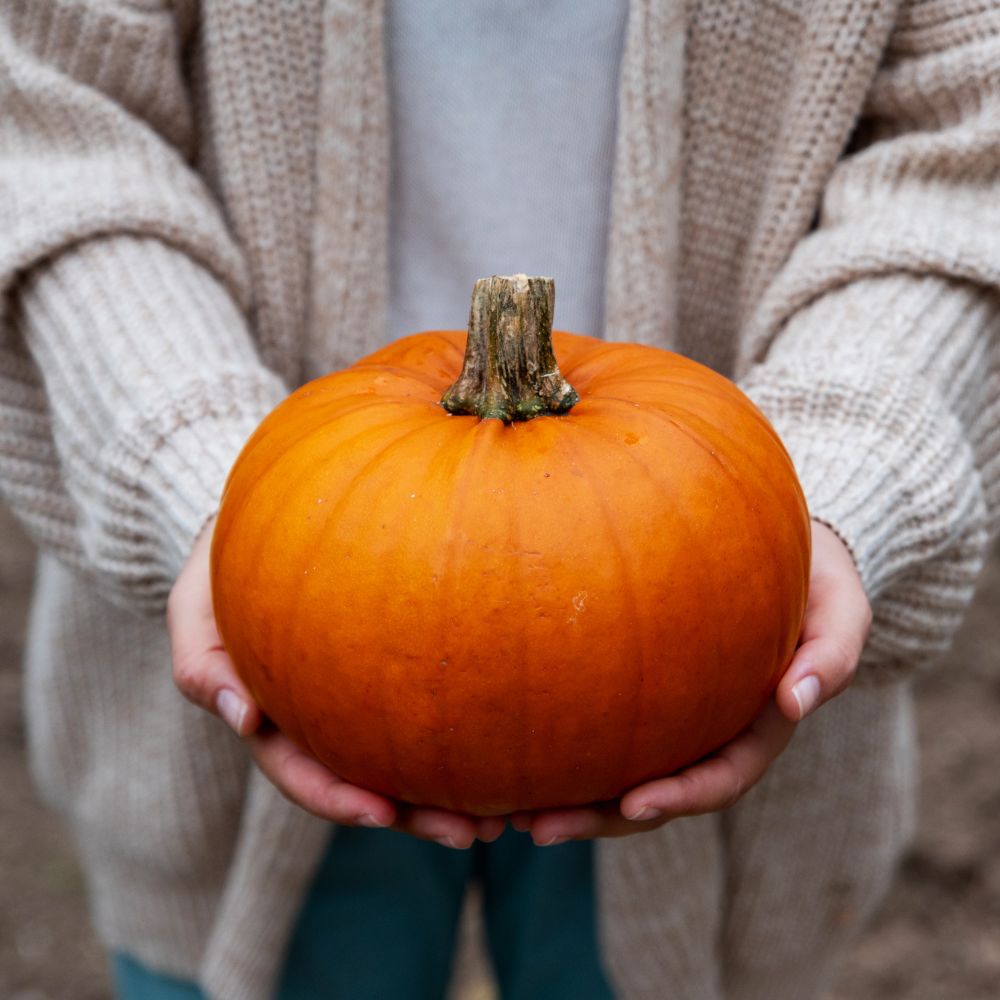
How To Teach The Pumpkin Experiment:
Begin by modeling how to estimate a measurement. Have students guess how tall the pumpkin is and how wide around. Record class predictions before measuring. Then, demonstrate how to wrap string around the pumpkin to find the circumference and how to measure it against a ruler or tape. Do the same for height using linking cubes. Students record their actual results on the printable chart.
Science Benefit:
This activity supports measurement and comparison skills. It helps students practice using nonstandard and standard tools, improves number sense, and encourages math vocabulary like taller, shorter, around, and measure.
2. What Weighs the Same as a Pumpkin?
In this hands-on comparison activity, students use a balance scale and familiar classroom objects to explore the concept of weight. They predict what items might weigh about the same as a pumpkin and then test their predictions.
What To Prep:
Balance scale
Medium-sized pumpkin
Classroom or household objects of varying weights (e.g., books, blocks, water bottles, toy cars)
Copies of the “What Weighs the Same as a Pumpkin?” Recording Sheet from the Pumpkin Investigation Posters
How To Teach The Pumpkin Experiment:
Begin by showing students the balance scale and modeling how it works. Ask them to predict which classroom items might balance the scale when paired with the pumpkin. Let groups test different combinations and document whether their predictions were correct. Students record results in a comparison chart, noting which items are heavier, lighter, or close in weight.
Science Benefit:
This activity builds understanding of mass and supports the NGSS skill of using tools to gather, analyze, and compare data. It also promotes vocabulary like heavier, lighter, and balance, while reinforcing observation and estimation skills.
3. Does a Pumpkin Sink or Float?
This science question is perfect for sparking curiosity and discussion. Students predict whether a pumpkin will sink or float, then test their hypothesis with a real pumpkin and a tub of water.
What To Prep:
Medium-sized pumpkin (clean and uncut)
Large clear tub or bin filled with water
Towels for cleanup
“Sink or Float” Recording Sheet from the Pumpkin Investigation Posters
How To Teach The Pumpkin Experiment:
Ask students to make predictions: “Do you think our pumpkin will sink or float?” Encourage reasoning: “Why do you think that?” Place the pumpkin gently into the tub and observe together. Discuss what happens and why—even though pumpkins are heavy, they float due to their hollow structure and air inside. Let students record their prediction and the result on the provided sheet.
4. How Many Seeds?
This hands-on activity builds math and science connections as students estimate and count the seeds inside their pumpkin. It’s messy, engaging, and full of place value practice.
What To Prep:
One pumpkin (cut open in advance)
Bowls or trays for holding seeds
Construction paper with 10 circles drawn on it (for sorting seeds by tens)
Paper towels or wipes for cleanup
“How Many Seeds?” Recording Sheet from the Pumpkin Investigation Posters
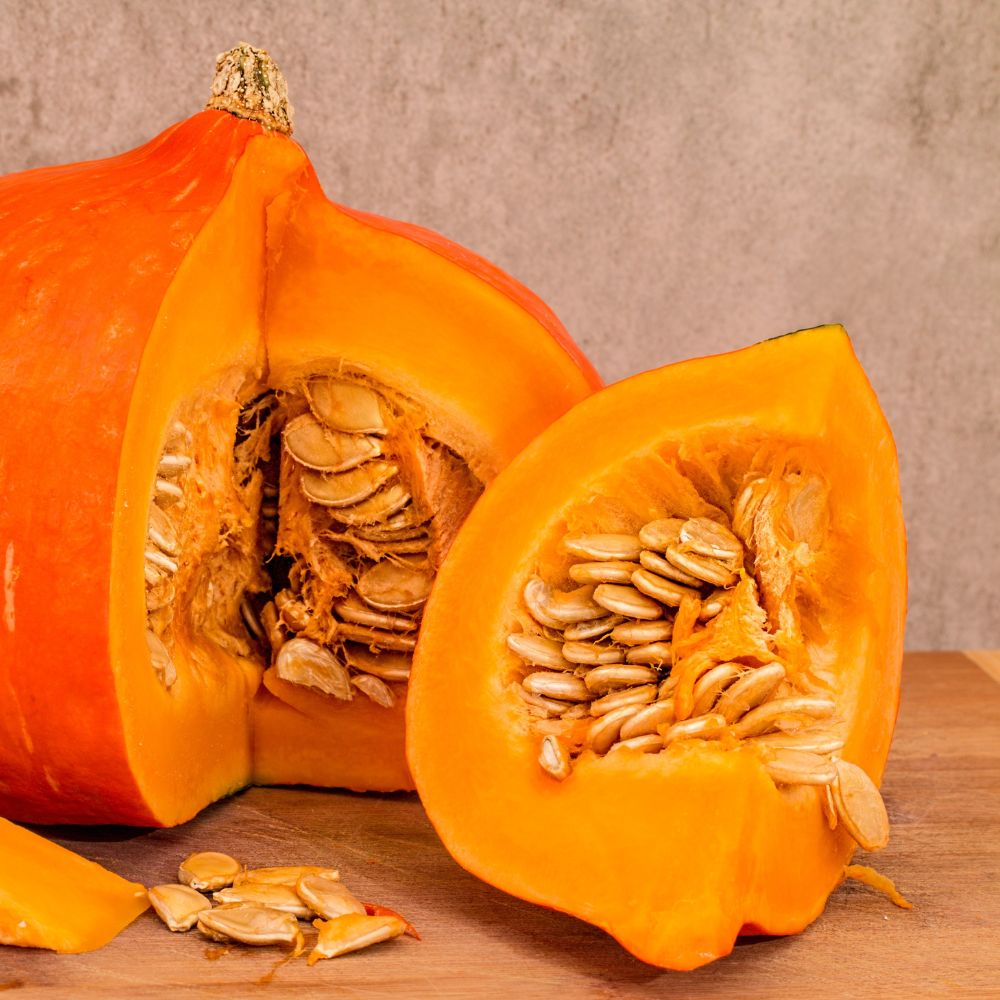
How To Teach The Pumpkin Experiment:
Invite students to estimate how many seeds they think are inside the pumpkin. After recording their guesses, scoop out the seeds and place them in a bowl. Give students sorting mats with ten circles, and have them place 10 seeds in each circle to keep count. Once all seeds are sorted, guide students in counting the groups by tens and adding any extras.
Science Benefit:
This experiment supports observation and data collection while reinforcing math skills like grouping, place value, and accurate counting. Students practice estimation, organization, and recording, a key step in early scientific thinking.
5. Five Senses Observation
This activity helps students explore a pumpkin using all five senses—encouraging them to slow down, observe carefully, and use descriptive language in their writing.
What To Prep:
One or more pumpkins (cut open for smell and touch)
Spoons or gloves for safe handling
Small cups or samples of roasted pumpkin seeds (optional for taste)
5 Senses Observation Recording Sheet from the Pumpkin Investigation Posters
Chart paper or anchor chart for shared sensory words
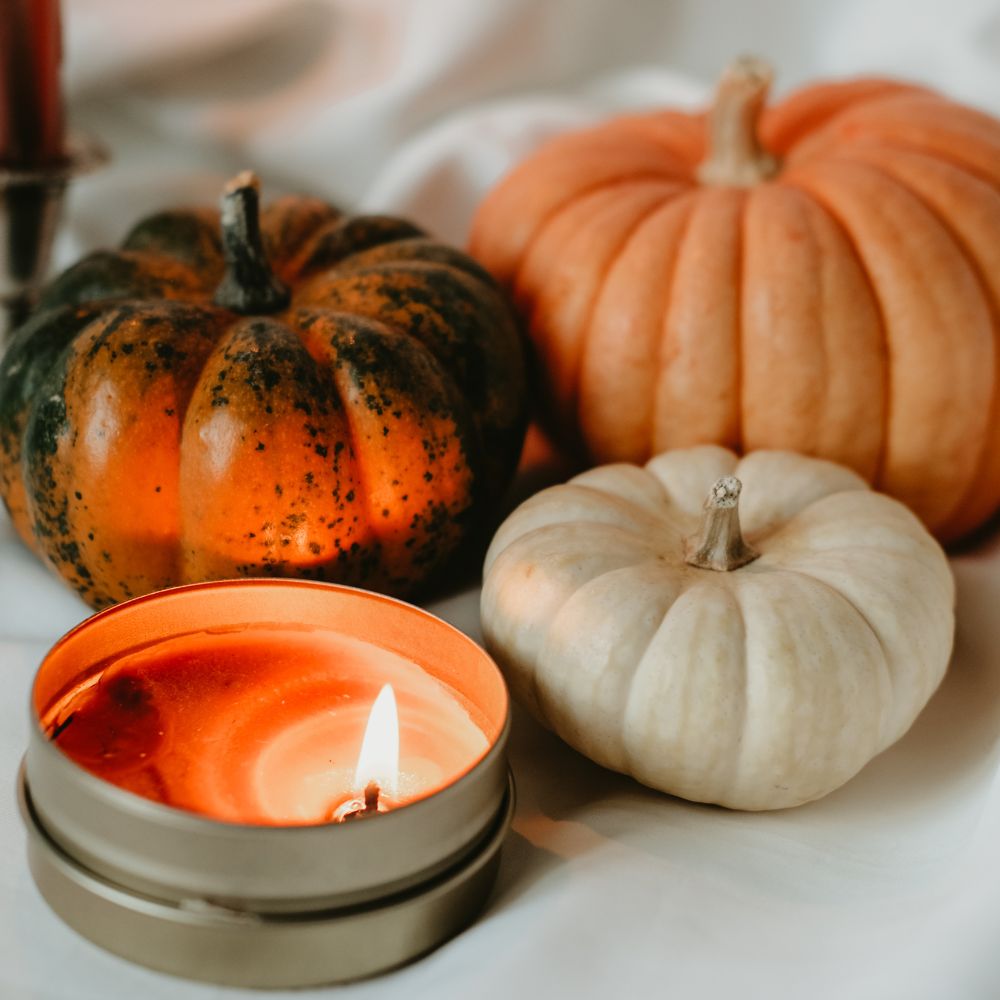
How To Teach The Pumpkin Experiment:
Guide students through each sense one at a time. Ask questions like, “What do you see on the outside?” “How does the inside feel?” and “What does the pumpkin smell like when we open it?” Encourage students to use specific describing words, and model how to record observations with labels or short phrases.
Science Benefit:
This activity supports careful observation and builds vocabulary by helping students connect sensory experiences with descriptive language. It also reinforces science process skills like noticing, comparing, and documenting with detail.
Roasted Pumpkin Seeds: A Tasty Wrap-Up
Roasting pumpkin seeds is a tasty way to end your Pumpkin Investigation Day—and students love it. After all the measuring, comparing, and seed counting, a crunchy snack helps students wrap up your lessons.
Collect the seeds during your seed-counting activity, then roast them at home and bring them back to class for students to sample. Use the experience to prompt a short writing response, class discussion, or sequencing activity.
Simple Roasted Pumpkin Seeds Recipe:
- Rinse and dry the seeds
- Toss with olive oil or melted butter and a pinch of salt
- Spread on a baking sheet
- Roast at 300°F (150°C) for 25–30 minutes, stirring halfway through
This quick snack is a fun way to celebrate the day’s learning and gives students another sensory experience to write about.
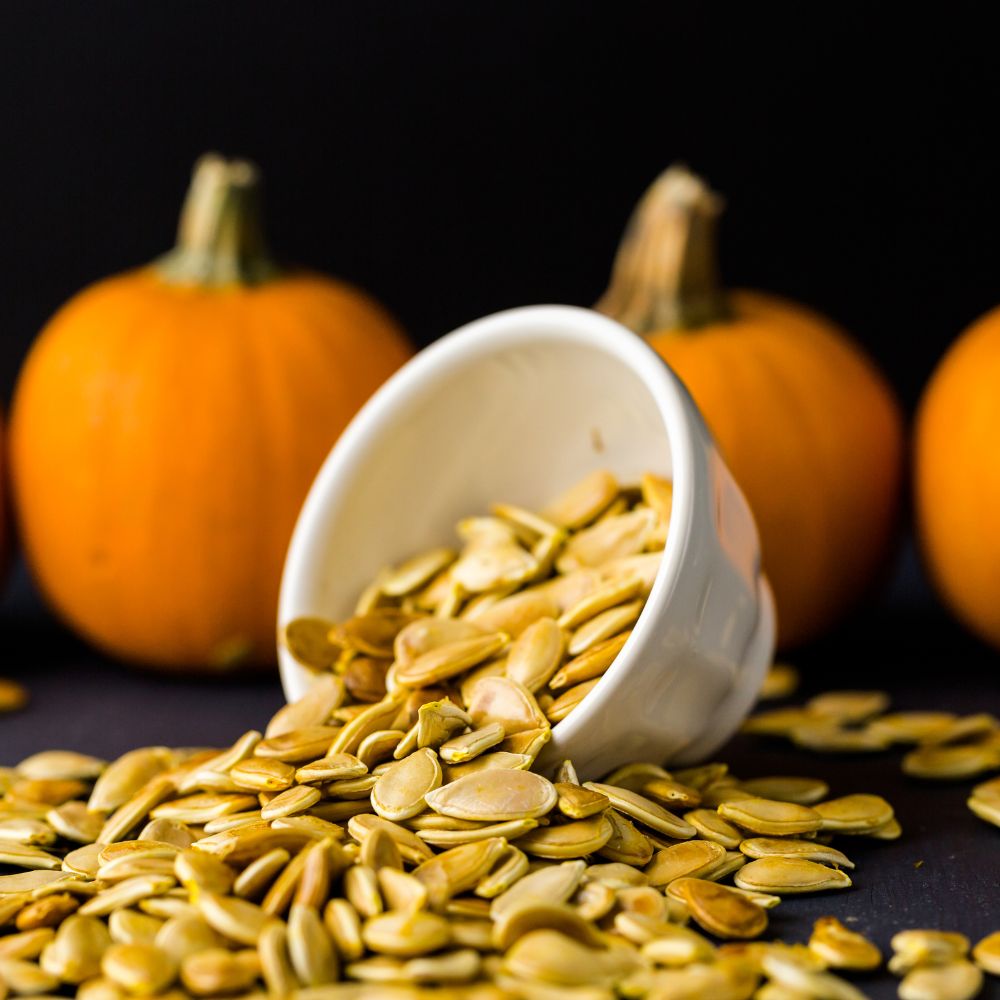
Ready to Start Your Pumpkin Science Experiments?
These pumpkin science activities are perfect for first grade students learning to observe, measure, and describe the world around them. A Pumpkin Investigation Day allows students to estimate weight and size, test whether pumpkins sink or float, count seeds in groups of ten, and record sensory observations, using real pumpkins. Download the Pumpkin Investigation Posters to introduce each experiment, guide student thinking, and collect data with clear, easy-to-use recording sheets.
More Pumpkin Activities And Ideas
Spookley The Square Pumpkin Activities
Turn your read-aloud into real reading practice with Spookley the Square Pumpkin classroom activities that support comprehension, writing, and SEL all week long.
20 Pumpkin Read-Alouds Blog
Find your next classroom favorite in this list of engaging, teacher-approved pumpkin picture books—perfect for building comprehension and seasonal fun.

